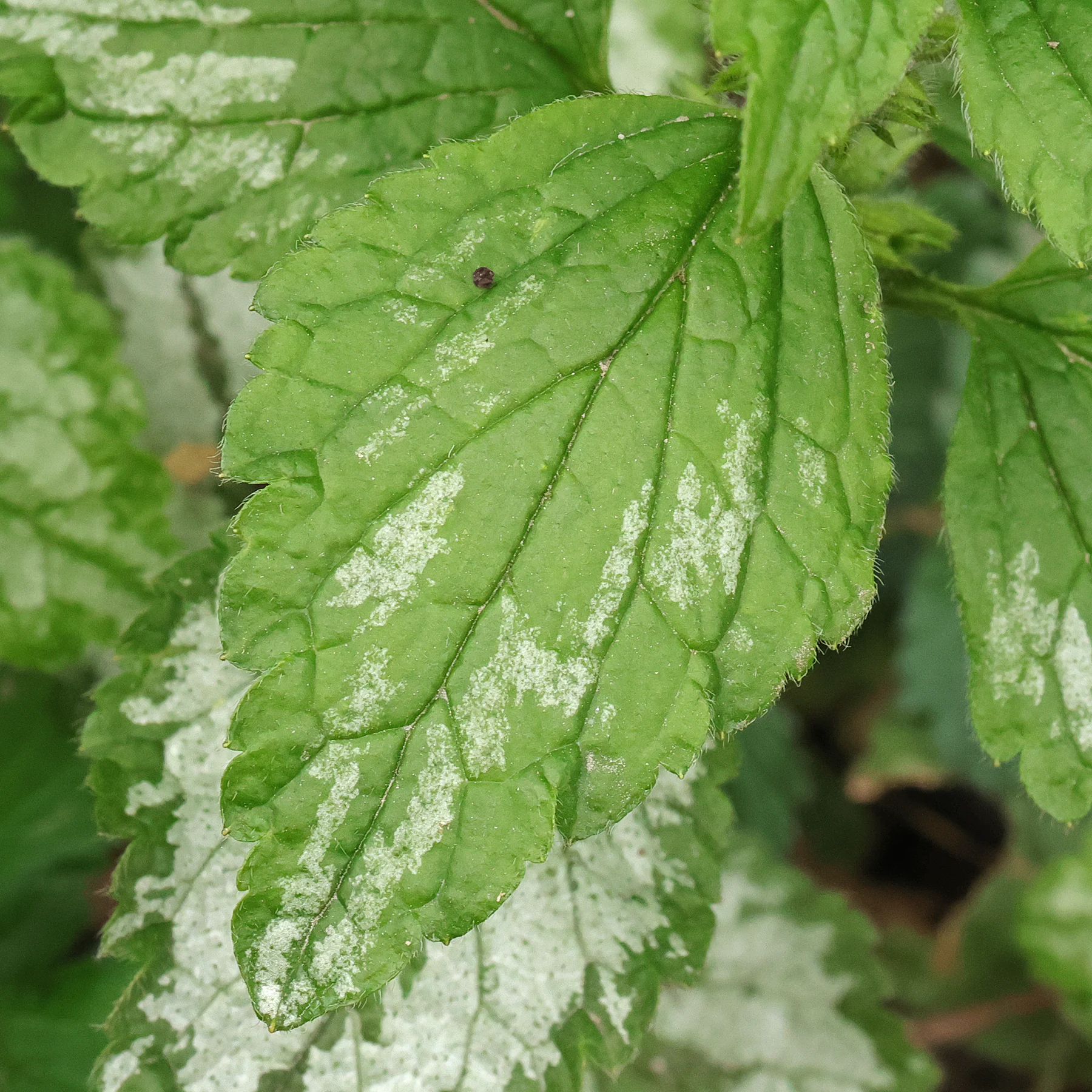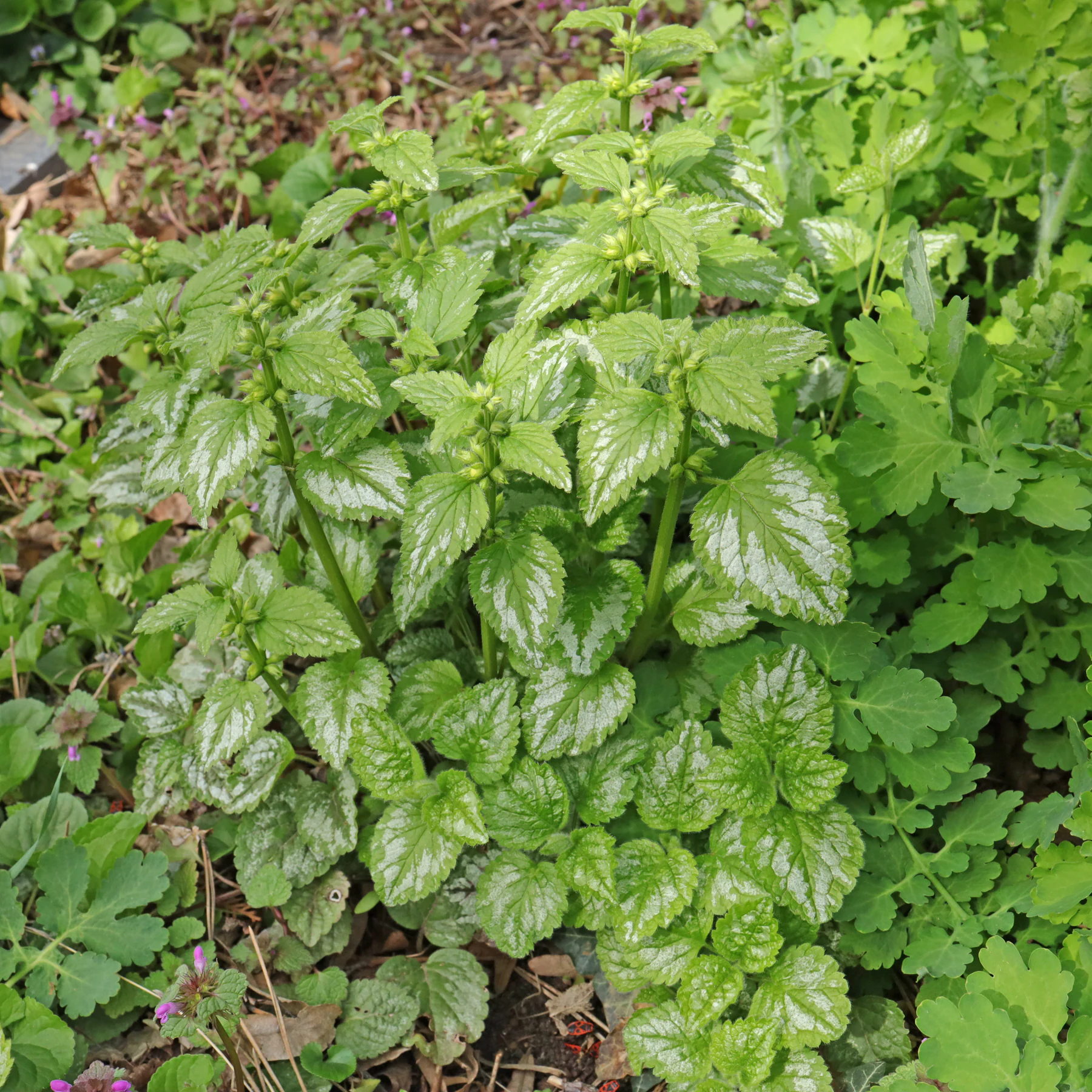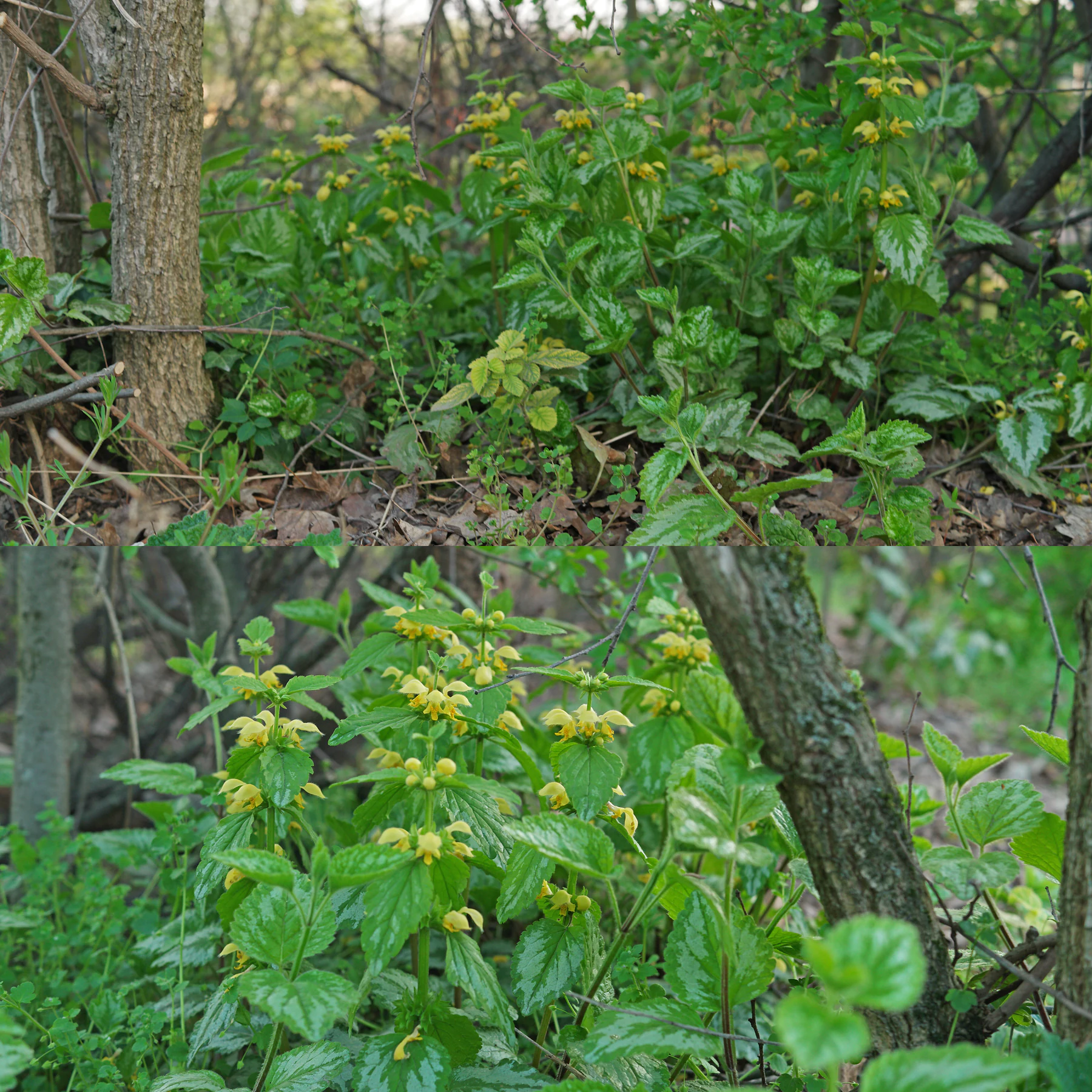Leaf type: Oval to pointed ovate, slightly heart-shaped at the base, triangular, notched/serrated at the edge
Phyllotaxis: Opposite
Colour: Green, green-silvery marbled
Life cycle: Perennial
Leaf (upper side)



Habitus & biology

The upright growing flowering shoots of Lamium galeobdolon grow between 20 and 50 centimetres tall. They can be seen from March to June. The creeping stolons can grow up to one metre long and also show some leaves in winter.

The ovate-lanceolate, more or less pointed leaves, which are sometimes slightly heart-shaped at the base, are green or green-silvery marbled in colour.


Distribution & habitates
The native distribution area includes most European countries and extends as far as western Asia. As an introduced species, the yellow archangel is also said to occur sporadically in the USA (source).

Lamium galeobdolon grows in and around woods, bushes and hedges. Its cultivated forms are popular garden plants and can be found growing wild. Some of the plants shown here are such “garden escapees”.

Botany
The yellow archangel or golden dead-nettle belongs to the Lamiaceae family.
There are four subspecies (subsp.) of Lamium galeobdolon, which differ in the shape and colouring of their leaves.
Botanical experts do not yet seem to agree on whether these subspecies should be regarded as independent species (source).


 Lamium amplexicaule (common henbit)
Lamium amplexicaule (common henbit)  Lamium album (white dead-nettle)
Lamium album (white dead-nettle)  Plectranthus verticillatus
Plectranthus verticillatus  Phlomis russeliana (turkish sage)
Phlomis russeliana (turkish sage)  Ballota nigra (black horehound)
Ballota nigra (black horehound)  Lamium purpureum (red dead-nettle)
Lamium purpureum (red dead-nettle)  Prunella vulgaris (self-heal)
Prunella vulgaris (self-heal)  Origanum vulgare (oregano)
Origanum vulgare (oregano)  Ajuga reptans cv.
Ajuga reptans cv.  Agastache mexicana
Agastache mexicana  Eryngium campestre (field eryngo)
Eryngium campestre (field eryngo)  Caryopteris × clandonensis
Caryopteris × clandonensis  Eryngium campestre
Eryngium campestre